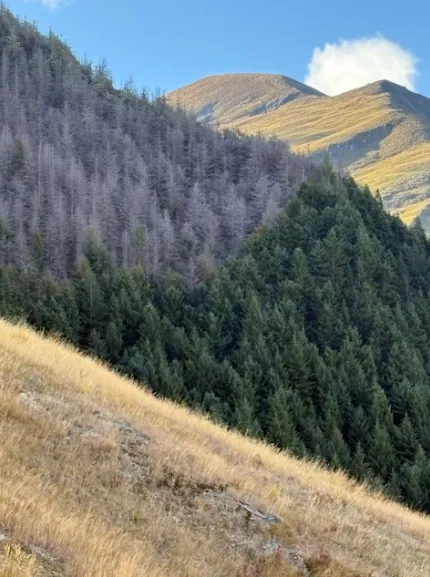Common Questions & Misconceptions
(Addressing skepticism and misunderstandings about climate change.)
The Big Picture
As we’ve seen throughout this website, misinformation and misconceptions are major barriers to meaningful climate action. In this section, we’ll tackle common myths and misunderstandings about climate change and provide clear, fact-based answers.
However, there are a few key things to keep in mind when addressing these misconceptions:
Not everyone will change their mind. Some people are unwilling to reconsider their views—whether due to personal beliefs, financial interests, or indifference. While it’s good to engage in as many conversations as possible, understand that some minds won’t change, and that’s okay.
- Widespread understanding isn’t necessary for progress. We don’t need 100% of the population to accept the climate crisis to make meaningful change, but the more people who do, the stronger our impact will be and we certainly need everyone’s help and cooperation. The challenges ahead are big, and collective action is essential.

What Misinformation Looks Like
It’s incredibly important to be aware of misinformation because it’s pervasive. It’s a little harder to find because it’s not legitimate, but it’s out there and you can stumble onto it. This video by Patrick Moore was on YouTube and if you started fact checking the things he says, they simply don’t check out. Worse yet, when you compare the things he says with the reality of the things he discusses, it’s fairly easy to see how he took the truth and either cherry picked facts and repainted them or he highlighted a sideline item to develop a false conclusion (here are just a couple for example). Misinformation misweaves factual information to get people who don’t fact check to think it’s all a conspiracy which keeps them from acting to change or pushing the government for change.
Common Questions & Misconceptions
(Addressing skepticism and misunderstandings about climate change.)
As we’ve seen throughout this website, misinformation and misconceptions are major barriers to meaningful climate action. In this section, we’ll tackle common myths and misunderstandings about climate change and provide clear, fact-based answers.
However, there are a few key things to keep in mind when addressing these misconceptions:
Not everyone will change their mind. Some people are unwilling to reconsider their views—whether due to personal beliefs, financial interests, or indifference. While it’s good to engage in as many conversations as possible, understand that some minds won’t change, and that’s okay.
- Widespread understanding isn’t necessary for progress. We don’t need 100% of the population to accept the climate crisis to make meaningful change, but the more people who do, the stronger our impact will be and we certainly need everyone’s help and cooperation. The challenges ahead are big, and collective action is essential.

The Full Story
There are many misconceptions about climate change, often fueled by misinformation or misunderstandings of science. Here are some of the most common:
Reality:
- While Earth’s climate has changed naturally over millions of years, today’s warming is happening much faster due to human activities, especially burning fossil fuels.
- Past climate shifts took thousands or millions of years, whereas today’s changes are occurring over decades. The speed of this change is much too fast for most plants and animals to adapt.
Reality:
- Climate refers to long-term trends, while weather is short-term. A single cold day or storm doesn’t disprove global warming, just like one hot day doesn’t prove it.
- In fact, extreme weather—including cold snaps—can be linked to climate change disrupting weather patterns.
While it may be cold in one spot of the globe and warm in another, the overall temperature of the earth has and is continuing to increase due to greenhouse gases. This warming of the globe is what’s causing climate patterns to change and upsetting that delicate balance we’ve had for the last 11,000 years.
Reality:
- Yes, CO₂ is a natural gas, but too much of it in the atmosphere traps heat and disrupts the planet’s energy balance.
- Human activities (like burning coal, oil, and gas) have increased CO₂ levels to the highest in millions of years, causing global warming.
Reality:
- Over 99% of climate scientists agree that human-caused climate change is real.
- The “debate” is largely manufactured by fossil fuel interests and misinformation campaigns.
Reality:
- While adaptation is possible, unchecked climate change will lead to severe consequences: rising sea levels, extreme heat, food shortages, and increased natural disasters.
- The cost of preventing climate change is far lower than the cost of dealing with its worst effects.
Reality:
- Wind, solar, and other renewables are now the cheapest and fastest-growing energy sources in many parts of the world.
- Energy storage (like batteries) and grid improvements are making renewables more reliable than ever.
Reality:
- While China emits the most CO₂ today, wealthy countries have historically emitted far more per person and still bear responsibility.
- Climate change is a global problem that requires action from all countries, especially those with the most resources. This is part of the political push that we need to advocate for from within our own government.
Reality:
- While some damage is irreversible, we can still prevent the worst by rapidly cutting emissions and transitioning to clean energy.
- Every fraction of a degree matters—reducing warming from 3°C to 2°C could save millions of lives and ecosystems. It’s not too late, but it is incredibly urgent!
Reality:
- While making EV batteries and solar panels has an environmental impact, they still produce far fewer emissions than gas cars and coal power over their lifetime.
- Battery recycling and clean energy production are improving rapidly, making them even more sustainable.
Reality:
- The cost of climate inaction (disasters, food shortages, health crises) is far greater than the cost of transitioning to clean energy.
- Green industries (like renewable energy, EVs, and sustainable agriculture) create jobs and boost economic growth.
- While plants do need CO₂, excess CO₂ disrupts ecosystems by altering temperatures, precipitation patterns, and increasing extreme weather events.
- Some plants may grow faster with more CO₂, but others suffer from heat stress, drought, and shifting seasons, reducing food production. The right balance of CO2 is the key.
- While volcanoes do release CO₂, human activities emit more than 100 times as much each year.
- Even large eruptions don’t compare to the billions of tons of CO₂ we release by burning fossil fuels.
- Some propose using geoengineering (e.g., spraying particles in the sky to block sunlight), but these are risky, unproven, and could cause unintended side effects.
- The safest and most effective way to combat climate change is reducing emissions and transitioning to clean energy.
- Climate change is already causing rising sea levels, stronger storms, heatwaves, and wildfires.
- Millions of people today are experiencing water shortages, crop failures, and displacement due to extreme weather. These events are only going to get more common and more intense.
- The ozone hole was caused by CFCs, while climate change is driven by CO₂ and other greenhouse gases.
- The ozone layer is recovering due to global action (Montreal Protocol), proving that international cooperation can solve environmental crises.
- The livestock industry contributes nearly 15% of global greenhouse gas emissions, similar to all cars, planes, and ships combined.
- Reducing meat and dairy consumption—even a little—lowers emissions, saves water, and protects forests.
- While recycling is helpful, it’s not enough on its own—we need to reduce consumption and redesign materials to be reusable.
- Many plastics can’t be effectively recycled, so cutting back on plastic use is even more important.
- Wind and solar are often dismissed as unreliable, but battery storage and smart grids are making them just as dependable as fossil fuels.
- Many countries are already running on over 50% renewable energy without major issues.
- While trees absorb CO₂, we can’t plant our way out of climate change—we still need to cut fossil fuel use drastically.
- Deforestation is also releasing stored carbon, making tree planting important but not a substitute for reducing emissions.
- Climate scientists warn we must halve global emissions by 2030 to avoid the worst impacts.
- The longer we wait, the harder and more expensive it will be to stop runaway warming.
